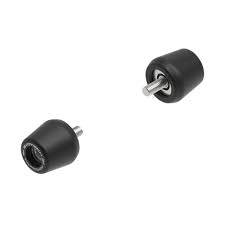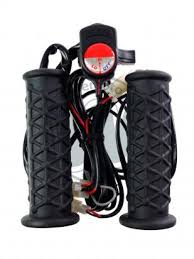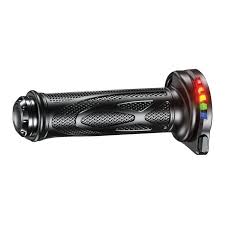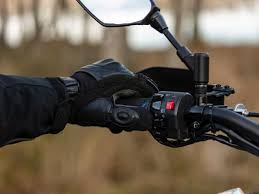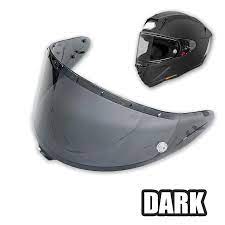Mastering Motorcycle Maintenance: The Essential Guide to Using a Motorcycle Chain Rivet Tool
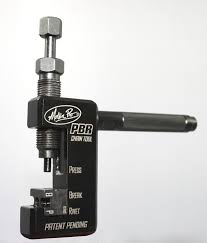
The Importance of a Motorcycle Chain Rivet Tool
When it comes to maintaining and repairing your motorcycle, having the right tools is essential. One such tool that every motorcycle enthusiast should have in their toolkit is a motorcycle chain rivet tool. This handy device plays a crucial role in the maintenance and replacement of your motorcycle’s chain, ensuring smooth operation and optimal performance.
So, what exactly is a motorcycle chain rivet tool? Simply put, it is a specialized tool designed to help you remove and install rivets on your motorcycle chain. Chains are an integral part of a motorcycle’s drivetrain, transferring power from the engine to the rear wheel. Over time, chains can stretch, wear out, or break, necessitating replacement.
With a motorcycle chain rivet tool, you can easily remove the old chain from your bike and install a new one without having to visit a mechanic. This not only saves you time and money but also gives you the satisfaction of performing maintenance tasks on your own.
Using a chain rivet tool is relatively straightforward. First, you need to remove the old chain from your motorcycle by breaking it at the master link. Then, using the rivet tool, you can push out the old rivets from the links of the chain. Once the old chain is removed, you can install the new chain by aligning it with the sprockets and using the rivet tool to press in new rivets securely.
Having a quality motorcycle chain rivet tool in your possession gives you peace of mind knowing that you can handle chain maintenance tasks efficiently and effectively. Whether you ride on-road or off-road, regular inspection and maintenance of your motorcycle’s chain are crucial for safety and performance.
Investing in a reliable motorcycle chain rivet tool is an investment in your bike’s longevity and performance. With this tool at hand, you can tackle chain-related issues with confidence and keep your motorcycle running smoothly for years to come.
7 Essential Tips for Using a Motorcycle Chain Rivet Tool Safely and Effectively
- Ensure the chain rivet tool is compatible with the size and type of your motorcycle chain.
- Follow the manufacturer’s instructions carefully when using the chain rivet tool.
- Inspect and maintain the chain rivet tool regularly to ensure proper function.
- Use appropriate safety gear, such as gloves and eye protection, when operating the chain rivet tool.
- Apply lubricant to the chain before using the tool to make riveting easier.
- Take your time and work patiently when riveting a motorcycle chain to avoid mistakes or accidents.
- Seek professional help if you are unsure about using the chain rivet tool correctly.
Ensure the chain rivet tool is compatible with the size and type of your motorcycle chain.
It is essential to ensure that the chain rivet tool you use is compatible with the size and type of your motorcycle chain. Different motorcycles may require different chain sizes and types, so using the correct tool ensures a proper fit and secure installation. Using an incompatible tool can lead to damage to the chain or improper riveting, compromising the safety and performance of your motorcycle. Always check the specifications of your chain and choose a rivet tool that is specifically designed for that particular size and type to ensure smooth and successful maintenance of your motorcycle’s chain.
Follow the manufacturer’s instructions carefully when using the chain rivet tool.
It is crucial to follow the manufacturer’s instructions carefully when using a motorcycle chain rivet tool. Manufacturers provide specific guidelines on how to operate the tool safely and effectively, ensuring that you achieve the best results while maintaining the integrity of your motorcycle chain. By adhering to the instructions provided, you can avoid potential damage to your chain and ensure that the riveting process is carried out correctly, leading to a secure and reliable connection. Remember, precision and attention to detail are key when working with a chain rivet tool, so always refer to the manufacturer’s guidelines for optimal performance.
Inspect and maintain the chain rivet tool regularly to ensure proper function.
It is crucial to regularly inspect and maintain your motorcycle chain rivet tool to ensure its proper function and reliability. By keeping the tool clean, lubricated, and free from any damage or wear, you can prolong its lifespan and maintain its effectiveness when working on your motorcycle’s chain. Regular maintenance of the chain rivet tool will help prevent any issues during use and ensure that it performs optimally whenever you need to replace or adjust your motorcycle chain. Remember, a well-maintained tool is a reliable tool that will help you keep your bike in top condition.
Use appropriate safety gear, such as gloves and eye protection, when operating the chain rivet tool.
When operating a motorcycle chain rivet tool, it is crucial to prioritise safety by using appropriate protective gear. Wearing gloves and eye protection while using the chain rivet tool helps safeguard your hands and eyes from potential injuries. The sharp edges of the chain links and the force applied during riveting can pose risks, making safety gear essential for a secure and accident-free maintenance process. By donning gloves and eye protection, you can ensure a safer working environment and reduce the likelihood of accidents or mishaps while operating the chain rivet tool.
Apply lubricant to the chain before using the tool to make riveting easier.
To ensure smooth and efficient riveting when using a motorcycle chain rivet tool, it is essential to apply lubricant to the chain beforehand. Lubricating the chain helps reduce friction and resistance during the riveting process, making it easier to push out old rivets and install new ones. By applying lubricant, you not only make the task of riveting more manageable but also help prolong the life of your motorcycle chain by reducing wear and tear. Remember, a well-lubricated chain is a happy chain that will perform optimally and enhance your riding experience.
Take your time and work patiently when riveting a motorcycle chain to avoid mistakes or accidents.
Taking your time and working patiently when riveting a motorcycle chain is crucial to ensure a safe and successful outcome. Rushing through the process can lead to mistakes that may compromise the integrity of the chain or even result in accidents while riding. By approaching the task with care and attention to detail, you can effectively install the chain using the rivet tool, ensuring that each link is securely connected. Remember, precision and patience are key when it comes to maintaining your motorcycle’s chain for optimal performance and safety on the road.
Seek professional help if you are unsure about using the chain rivet tool correctly.
It is crucial to seek professional help if you are unsure about using the motorcycle chain rivet tool correctly. While the tool can be a valuable asset for maintaining your motorcycle’s chain, using it incorrectly can lead to damage or safety hazards. Professional mechanics have the expertise and experience to handle such tools with precision and ensure that the job is done correctly. Don’t hesitate to reach out for assistance if you have any doubts or concerns about using the chain rivet tool – your safety and the performance of your motorcycle are worth the extra precaution.


